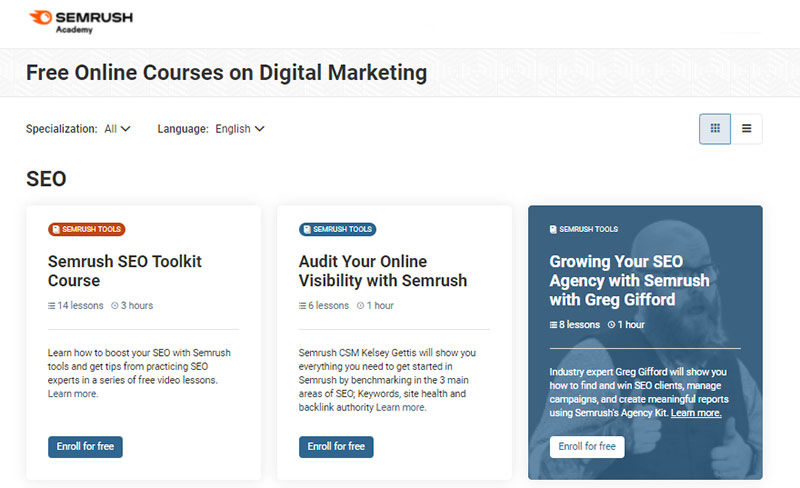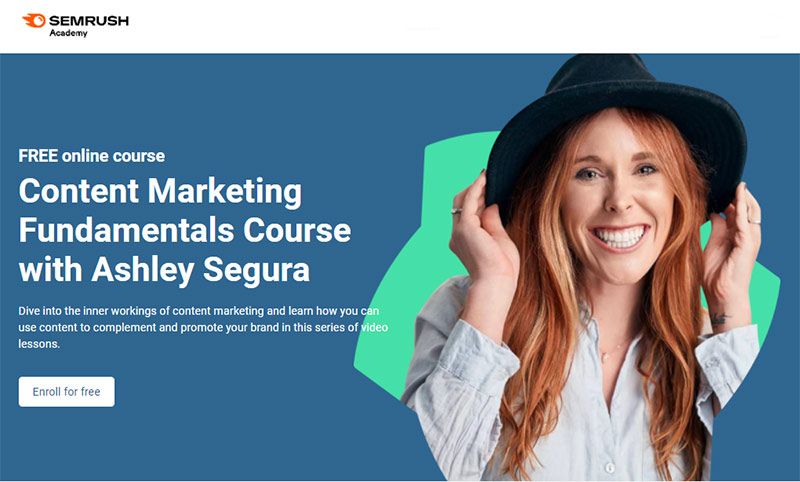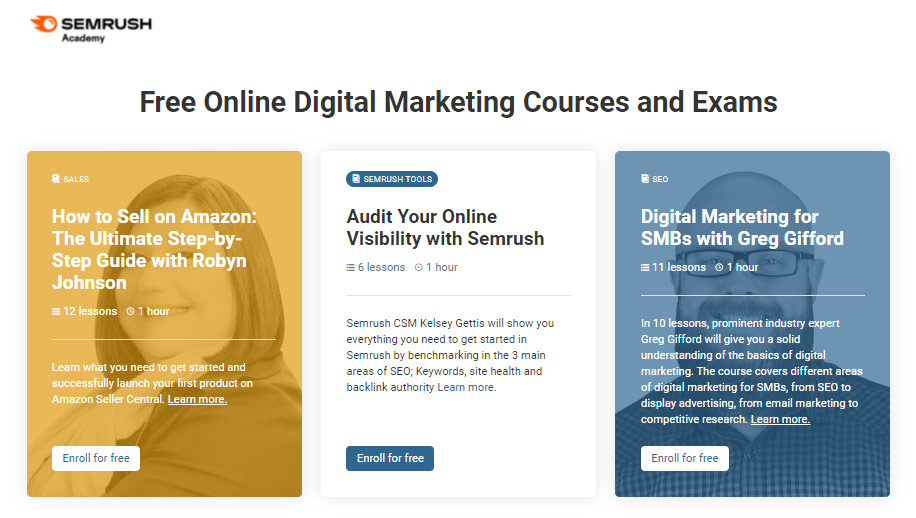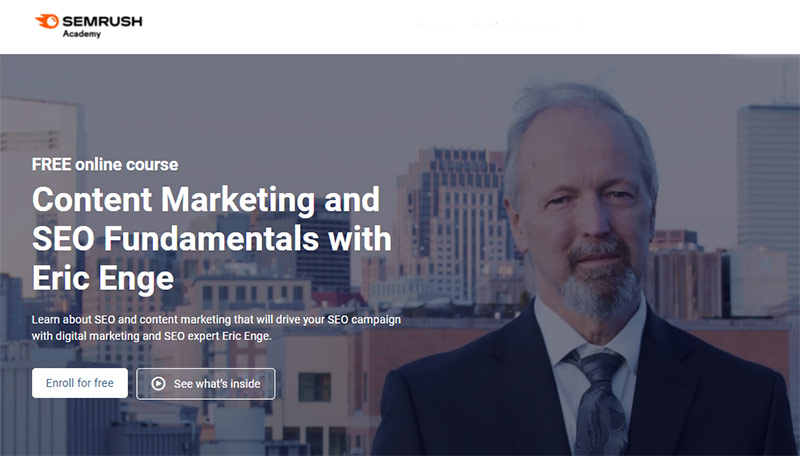
The average global consumer sees thousands of digital ads per day, prompting most of them to build subconscious defences against disruptive brand efforts. Developing a content marketing strategy specifically for local SEO is one of the most effective ways to stand out even in the most crowded virtual spaces.
Have you tried a local technique to attract quality leads, boost conversion rates, and increase revenues? Now would be the perfect time to start.
We were so impressed with the scope of the 7 day free trial Semrush we signed up for the professional package and decided to become affiliates and promote the training, tools products and services to our freelance and small and medium enterprises followers. This means that some of the links in our articles that lead to Semrush’s websites may lead to us earning a small commission
This post may contain affiliate links. When you click on them, we may earn a small commission at no additional cost to you. We started our journey with Semrush with a free trial.
Let us know what you think of the free trial and the benefits in the comment box below or let us know
What Is Local Content Marketing
Content marketing is the process of creating and distributing valuable content to capture, engage, and move qualified audiences into profitable action. The operative word in this definition is valuable because it differentiates strategies from typical advertising and marketing efforts.
An Optin Monster article reveals the following statistics:
- 65% of marketers find it challenging to develop captivating content. [Tweet this statistic.]
- 62% of decision-makers don’t know how to measure content marketing return on investment (ROI). [Tweet this statistic.]
- 60% of business owners claim they can’t produce quality content consistently. [Tweet this statistic.]
This marketing branch is all about providing consumers with videos, social media content, blogs, infographics, and paid ads that resonate with them on a personal level.
Old Spice is one of the best content marketers today. Does the brand bombard your screens with incessant product information — scents, packaging sizes, and availability, among others? No, it doesn’t. Instead, the company provides consumers with funny videos that propel its social media fame.
Companies don’t just sell products anymore; they sell experiences.
Small business owners can use content marketing to enhance a client’s journey, from the first brand interaction to the post-sales stage. These are some of the benefits associated with this marketing arm:
Boost SEO rankings: Search engines like Google consider content when ranking pages. Developing a content marketing strategy is an effective way to drive organic website traffic.
Establish authority: Exceptional content inspires backlinks and lowers bounce rates. It can help organizations elevate their status as a reliable source of information for specific keywords.
Increase social media engagement: Ground-breaking Facebook, Instagram, or Twitter content can turn random visitors into adoring fans. Such posts encourage social shares, which will maximize any company’s ROI.
Connect with different buyer personas: Organizations that practice content marketing can address the varying pain points of their clients.
Create awareness: Consumers easily remember brands that provide them with helpful information instead of digital noise.
Before, only mega corporations and top agencies practiced content marketing. However, through localized efforts, small businesses can now compete with their bigger rivals. The first step is using a free trial for your website site audit to find out about your current situation:

How To Develop a Local Content Marketing Strategy
Now that we’ve talked about the importance of local content marketing, let’s discuss how to develop a strategy for it.
1. Set Your Goals
As with any project, the first step is to set your goals. You can’t gauge how successful you are — or if you are at all — without determining your objectives.
Consider these goals:
- Improve revenue
- Magnify client retention
- Enhance SEO activities
- Generate leads
- Increase social media engagement
Remember to keep your goals SMART: simple, measurable, actionable, reasonable, and time-bound. For example, instead of saying improve revenue, you can target increasing your sales by 10% in one year.

2. Know Your Target Market
This step might seem like advice straight out of a marketing 101 book, but clients often overlook this part of the strategy. Sometimes, entrepreneurs get so excited about the potential benefits that they forget who the star should be in any business: the target market.
Below are the three essential components of customer research.
Collect Demographic Information
To understand your potential clients better, define their age, location, gender, income, spending habits, preferred digital platforms, etc. Find out everything you can about them to address their pain points.
Practice Social Listening
Social listening is the act of tracking digital conversations about your brand to discover consumer perceptions. Keep in mind that the image you want to build will not always match how your customers see your brand. Check out forums, hashtags, and even the less popular social sites.
Do Your Keyword Research
This step is essential in integrating your content marketing with your SEO efforts. Learn which keywords your customers use to find products or services similar to yours.
Here are some of the things you can do for your research:
- Make a list of relevant topics related to your business.
- Use keyword tools like Google Keyword Planner (free with a Google ads account) or Semrush Keyword Research.
- Understand how intent affects keyword usage. Clients about to make a purchase use keywords differently than curious ones scanning the market for options.

3. Run Website Audit
A website audit is crucial for digital marketing success. Before creating a content marketing plan, make sure your website is ready to rank in local SEO.
These are some factors that might affect site performance:
- Content
- Site speed
- Functionality
- User experience
- Functionality
Your audit should reveal Google penalties and security breaches.
4. Perform Competitor Analysis
Just as you need to learn everything about your potential clients, it’s essential to exert as much effort to study your rivals. A competitor analysis will help you understand your strengths and weaknesses versus the competition. These tasks allow business owners to enhance their strategies.
Below are some of the steps you can follow:
- Identify your direct, potential, indirect, future, and replacement competitors. However, you can focus on the direct competition — those that offer the same products or services to the same cities or states you serve.
- Perform a SWOT analysis to discover the ideal strategies to use for your goals.
- Learn which keywords your rivals use.
- Check out their websites to study their products, pricing, distribution channels, and offers.
Use social listening to find out what clients say about them.

5. Create a Local Content Marketing Plan
Your local content marketing plan should include the ideal channels, content types, and budgets for reaching your target market. If done right, you should attract quality traffic, generate backlinks, and encourage social shares.
Free Local Content Marketing Training for SMEs
If you’re not sure how to start developing a strategy, SEMrush Academy has pro tips for you. Check out this page to access the best free local content marketing training anywhere on the web. Read on for more information about four of the top ones.

SEMrush Content Marketing Toolkit Course
SEMrush Content Marketing Toolkit Course
This four-hour course consists of nine lessons. It should help you learn how to tailor your local content marketing strategy. Watch video lessons and get pro tips from digital marketing experts.
These are the modules for this course:
- Content and Analysis Optimization
- Content Research and Ideation
- Content Distribution
Content Marketing Fundamentals Course with Ashley Segura
Dive deeper into the basics of content marketing and discover what it can do for your brand through a series of video lessons. This course will take two hours to complete.

Below are the lessons you can expect
- Definition of Content Marketing
- Implementing It on Your Business
- Business Goals
- Competitor Research
- Audience Research
- Auditing Existing Content
- Content Ideation
- Content Calendar
- Content Creation
- Content Optimization
- Content Distribution
- Measuring Content
- Pro Tips
Role of Content Course with Eric Enge
After learning more about content marketing, you can enrol in this one-hour course to understand how to implement it with your SEO strategy.

These are the lessons for the course:
- SEO Content Basics
- The E-A-T Concept
- Importance of Content in SEO
- How Consumer Needs Impact Content
- The Fundamentals of Links and PageRank
- The Evolution of SEO Ranking Factors
- Backlink Analysis
- The Power of Informational Content
- Content Hubs Versus Blogs
Content Marketing and SEO Fundamentals with Eric Enge
This one-hour course will help you develop a content marketing strategy to support your SEO efforts.

These are the topics you can expect:
- Content Marketing Plan
- Guest Posts
- Marketing and PR Collaboration
- Content Syndication
- Content Types
- Content-Based Link Building
- Creating Standout Content
Boost Your Digital Presence Now
Local content marketing is one of the most cost-effective ways to generate leads, encourage conversions, and increase sales. If you play your cards right, you should experience its benefits in as little as six to nine months.
Do you want to start your local content marketing journey? Enroll in free Semrush classes now to boost your digital presence.
















